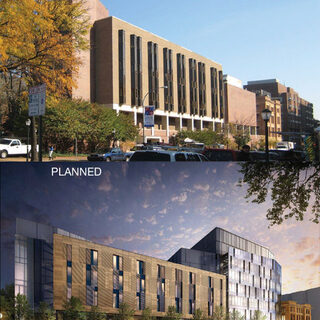Tradeline's industry reports are a must-read resource for those involved in facilities planning and management. Reports include management case studies, current and in-depth project profiles, and editorials on the latest facilities management issues.
Latest Reports
Evolving Technologies Improve Feasibility of Renovating Aging Science Facilities
New technologies and approaches are making the renovation of academic science facilities a more financially attractive option for institutions facing limited budgets, constrained real estate, and aging buildings with prominent historic legacies. Recent data suggests that, depending on the type of technology applied, institutions can achieve significant savings by renovating existing buildings to meet the needs of modern science as opposed to demolishing and building new.
Academic Health Sciences Centre
The six-story Academic Health Sciences Centre embraces multidisciplinary, highly technical research, while supporting Saskatchewan's commitment to provide exceptional healthcare for the people of the province. Flad Architects collaborated with Henry Downing Howlett Architects to design the new D Wing, which houses research labs, animal facilities, and academic offices for biomedical and pharmaceutical researchers from the various Health Sciences Colleges and units at the University of Saskatchewan.
Trends in Space Allocation at Educational Research Laboratories
Research universities and liberal arts colleges are taking a closer look at how they apportion lab space to provide the best research environment for faculty and an optimal learning atmosphere for students, while adhering to safety protocols, reducing costs, and adding institutional flexibility.
Helix Center Biotech Incubator
The Helix Center Biotech Incubator lab provides 33,000 sf of wet and dry lab space and offices for bioscience research entrepreneurs and biotech innovators. The incubator is geared toward fast-growing companies and entrepreneurs in the early stages of research in the plant and life sciences and in the commercialization of new technologies.
Performance Guaranteed Facility Model Provides Outcomes-Based Construction Method
The Performance Guaranteed Facility (PGF) model is a relatively new type of public/private partnership that allows the occupants to own a building the moment construction begins, while private-sector partners commit to its design, construction, financing, and ongoing maintenance, including future rehabilitation. The model goes by different names, but the concept involves an interactive partnership designed to benefit all parties for the long term.





